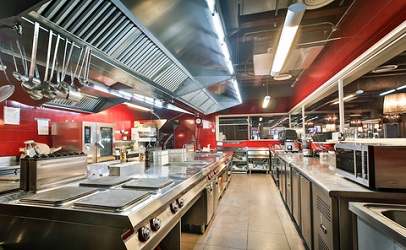Most everything these days is so after-the-fact and, in some circumstances, a fire drill. Proper communicating, planning and budgeting are necessary when it comes to equipment maintenance, replacement or purchasing. Everything from small wares, such as a simple vegetable peeler, to larger pieces of processing equipment, like a meat grinder, often get neglected or forgotten about over time.  The old saying, “If it ain’t broke, why fix it?,” often prevails when operators either don’t realize a potential issue, or worse, it is the end of the month, when there is a resistance to spending any extra money. The fear of explaining why an unnecessary purchase or service was made at the 11th hour to the person in charge is something that most field-level management personnel dread. Then the fear of a demotion or unemployment looms. But, if there is a solid reason (especially dealing with food safety), explanation and proper planning, it will improve safety, limit liability, and be more cost-effective in the long run. Here are some simple tips for food service operators when it comes to equipment maintenance:
The old saying, “If it ain’t broke, why fix it?,” often prevails when operators either don’t realize a potential issue, or worse, it is the end of the month, when there is a resistance to spending any extra money. The fear of explaining why an unnecessary purchase or service was made at the 11th hour to the person in charge is something that most field-level management personnel dread. Then the fear of a demotion or unemployment looms. But, if there is a solid reason (especially dealing with food safety), explanation and proper planning, it will improve safety, limit liability, and be more cost-effective in the long run. Here are some simple tips for food service operators when it comes to equipment maintenance:
- Take a look! Spend some quality time inspecting your equipment. If it is compromised in any way, it either needs to get fixed or replaced, especially if it is a food contact surface. Cracked, chipped, broken, pitted, rusted or excessively worn equipment can either promote bacterial harborage or create a potential physical hazard in food. Ask yourself: Just where did that missing screw end up? You may just end up with a critical or priority violation from your regulatory agency, or perhaps a fine. Even non-food contact areas of equipment can present issues if they are damaged or missing, especially if it involves safety. A broken wheel on a rolling bakery rack or the leg of a prep table that has cardboard underneath it to make it stable are basic problems that need to be addressed.
- Duct tape is not a final solution.
- Take an inventory of your equipment. Some operators have no idea of what they have or what they need. They pointlessly order serving spoons when they already have two cases hidden somewhere in the storage area, which brings me to…
- Be organized! Sloppy controls and storage practices are behavioral. Use your space wisely. If you can’t find your emergency exit door, that is an issue, not only with your stuff, but your employees and OSHA as well.
- Have open communication with your employees. Believe me, one of the biggest pitfalls of food service operators is not providing, or fixing, equipment that your employees use. Ask. I’m not saying their wish is your command; I’m saying to be aware of concerns. Believe it or not, that part-time teenager just may save your ass someday.
- Budget accordingly. Don’t expect things to last forever. At some point in time, equipment will need to get fixed or replaced.
- Take a hard look at your maintenance contracts. Is your service provider milking you dry? What are the standard exclusions? What are they responsible for, and what are they not responsible ?
- Ask questions. Is that equipment insured, or still under warranty?
- The dollar store is usually not an NSF-approved source of equipment.
There it is, my basic two cents. Sometimes common sense really is not so common. Step back and take a look both outside and inside of the box. Happy holidays to all.
(To sign up for a free subscription to Food Safety News, click here.)
